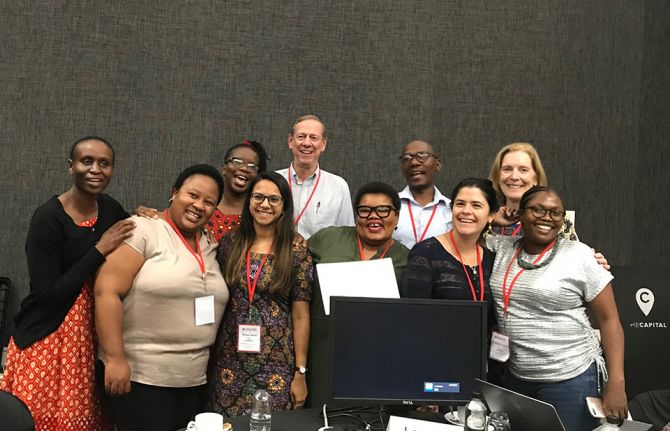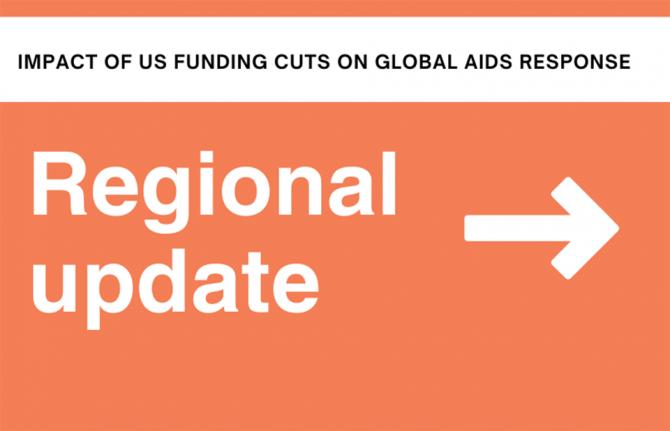

Feature Story
Modelling the next set of HIV data
26 March 2019
26 March 2019 26 March 2019Thirty minutes before the workshop had even started, the meeting room was full. A murmur of voices echoed around the room as the participants took a last look at the data that would be used in the next round of HIV estimate modelling. It was important to get this right—the results of the workshop would eventually influence the allocation of billions of United States dollars-worth of investments in the AIDS response.
More than 100 people from 11 countries in eastern and southern Africa, supported by nine organizations, had come together in Johannesburg, South Africa, to analyse the trends and burden of the HIV epidemic in their countries. The UNAIDS workshop was one of 11 held worldwide between 28 January and 30 March 2019 during which 140 country teams—including epidemiologists, HIV programme managers and monitoring and evaluation experts—learned about the latest updates to the software used to estimate the number of people living with HIV, new HIV infections and AIDS-related deaths.
Over the course of the workshops, the teams produced new estimates on the HIV epidemics in their countries from 1970 to 2018, refining estimates made in past years. Country programmes and donor responses are based on the latest and most accurate data. Such data are used to set targets, identify hotspots, revise national programmes and decide the course of the AIDS response.
Before they arrive at the workshop, the country teams collect programme and surveillance data from their health information systems. At the workshop, those data are entered into Spectrum—a sophisticated UNAIDS-supported computer software package used to compile and analyse data on the HIV epidemic—to produce country HIV estimates.
Those countries that have good facility-level data use that information, together with data on road networks, population densities and other variables, to calculate the number of people living with HIV by district—information that is crucially important for a location–population approach to the AIDS response. Those district estimates are further broken down into different age groups and by sex.
Countries that receive funds from the United States of America import their estimates into a spreadsheet known as the Data Pack, which is used in the process to determine the level of financial support a country will receive.
One country whose AIDS response is supported by the United States is Lesotho. Assigned to support the country team members during the Johannesburg meeting was John Stover, the lead developer of Spectrum, who has an exceptional ability to explain complex concepts and find rigorous solutions even where few data exist.
The Lesotho country team members were eager to develop a comprehensive plan as part of Lesotho’s bid for additional funding, but they were concerned about the new estimates of child HIV infections, which were higher than their previous estimates. Mr Stover worked with the team over the course of the week to walk them through each of the assumptions made in the models, explaining how the model matched the data available from the country and the recent Lesotho Population-Based HIV Impact Assessment (LEPHIA) results and what caused the change in the estimates. A new tool has been included in Spectrum that shows where the new child infections came from and how to strengthen the prevention of mother-to-child HIV transmission programme to reduce the number of new child HIV infections in the future. When they left the workshop, the team had the capacity to explain the new estimates to policy-makers in Lesotho and beyond and to propose how to lower those new HIV infections in the future.
Additional workshops that trained more than 500 people on the Spectrum software have been held around the world, including in: Bangkok, Thailand; Panama City, Panama; Marrakesh, Morocco; Dakar, Senegal; Stockholm, Sweden; and Port of Spain, Trinidad and Tobago. The workshops were supported by facilitators from 14 organizations.
The estimates produced in the workshops will be reviewed by staff at UNAIDS over the coming month for quality assurance, before being signed off by ministers of health and published by UNAIDS at aidsinfo.unaids.org and in a UNAIDS report in mid-2019.



